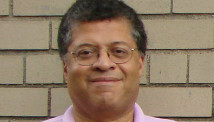CAIRO: Thousands of protesters clashed with police in several provinces in rallies calling on Islamist President Mohamed Morsi to fulfil the goals of the revolt that brought him to power.
More than 120 people were injured in the unrest across the country on Friday, the health ministry said.
In Cairo, protesters lobbed petrol bombs and set off fireworks, as security vans charged towards demonstrators who fled down the large avenue flanking the presidential palace.
Clashes also erupted in several cities and towns in the Nile Delta province of Gharbiya, where the health ministry said 28 people had been injured, mainly from tear gas inhalation.
In the Mediterranean city of Alexandria, 20 people were hurt in sporadic clashes between police and protesters, said the ministry.
The confrontations came after thousands took to the streets across Egypt answering a call by opposition groups for "Friday of dignity" rallies.
Prime Minister Hisham Qandil condemned the violence as "unjustifiable" in comments cited by the official MENA news agency.
Those responsible were "damaging the stability of the country and obstructing the interests of citizens", he said.
In recent months, Egypt has witnessed regular, often bloody, protests against Morsi.
His opponents say he has betrayed the revolution that toppled Hosni Mubarak, accusing him of using his power to promote the interests of his Muslim Brotherhood, long banned under his predecessor.
The country has been deeply divided between Morsi's mainly Islamist supporters and an opposition of liberals, leftists, Christians but also deeply religious Muslims calling for rights and the separation of religion and state.
Shortly after Muslim noon prayers, marchers set off from several locations in Cairo to Tahrir Square and the presidential palace, banging on drums, waving flags and clapping in unison.
In Tahrir, several thousand protesters carried a huge Egyptian flag as they listened to speeches and music from the stage.
Several hundred protesters also gathered outside the presidential palace chanting "Freedom, where are you? Brotherhood rule stands between us," a reference to the Muslim Brotherhood movement from which Morsi hails.
Protests against the Islamist president also took place after the weekly Friday Muslim main prayers in several of Egypt's 27 provinces.
In the Nile Delta city of Kafr el-Sheikh, police fired tear gas to disperse a crowd outside a government building, as protesters hurled stones at the security forces, MENA reported.
In the city of Tanta, police clashed with protesters who tried to break into the municipal council building, MENA added.
Thirty-eight opposition parties and movements issued the joint call for the rallies. They want a new unity government, amendments to the Islamist-drafted constitution and guarantees for the independence of the judiciary.
The protests come after several incidents of police violence that have provoked public outrage and angry demonstrations.
Earlier this week, the death of a pro-democracy activist following days in police custody sparked fury and reignited calls for police reform -- a key demand of the uprising that toppled Mubarak in 2011.
The protester's death came just days after footage aired live on television of a man stripped naked and beaten by riot police during demonstrations near the presidential palace.
Both incidents confronted Morsi with uncomfortable parallels with the old regime.
And only a few days ago, clerics issued fatwas to justify killing opposition leaders.
Radical cleric Mahmud Shaaban, a professor at Sunni Islam's main seat of learning Al-Azhar, gave the green light to kill opposition leaders including former UN nuclear watchdog chief Mohamed ElBaradei and ex-presidential candidate Hamdeen Sabbahi, during a talk show on a satellite channel.
Another hardline cleric, Wagdi Ghoneim, called on Muslims to "kill the thugs, criminals, and thieves who burn the country", state media reported.
Security was stepped up outside the homes of ElBaradei and Sabbahi ahead of the protests, following orders from the interior minister, witnesses told AFP.
The presidency condemned the fatwas as "terrorism".
"Some are promoting and inciting political violence while others who claim to speak in the name of religion are permitting 'killing' based on political differences and this is terrorism," the presidency said.
- AFP/xq













